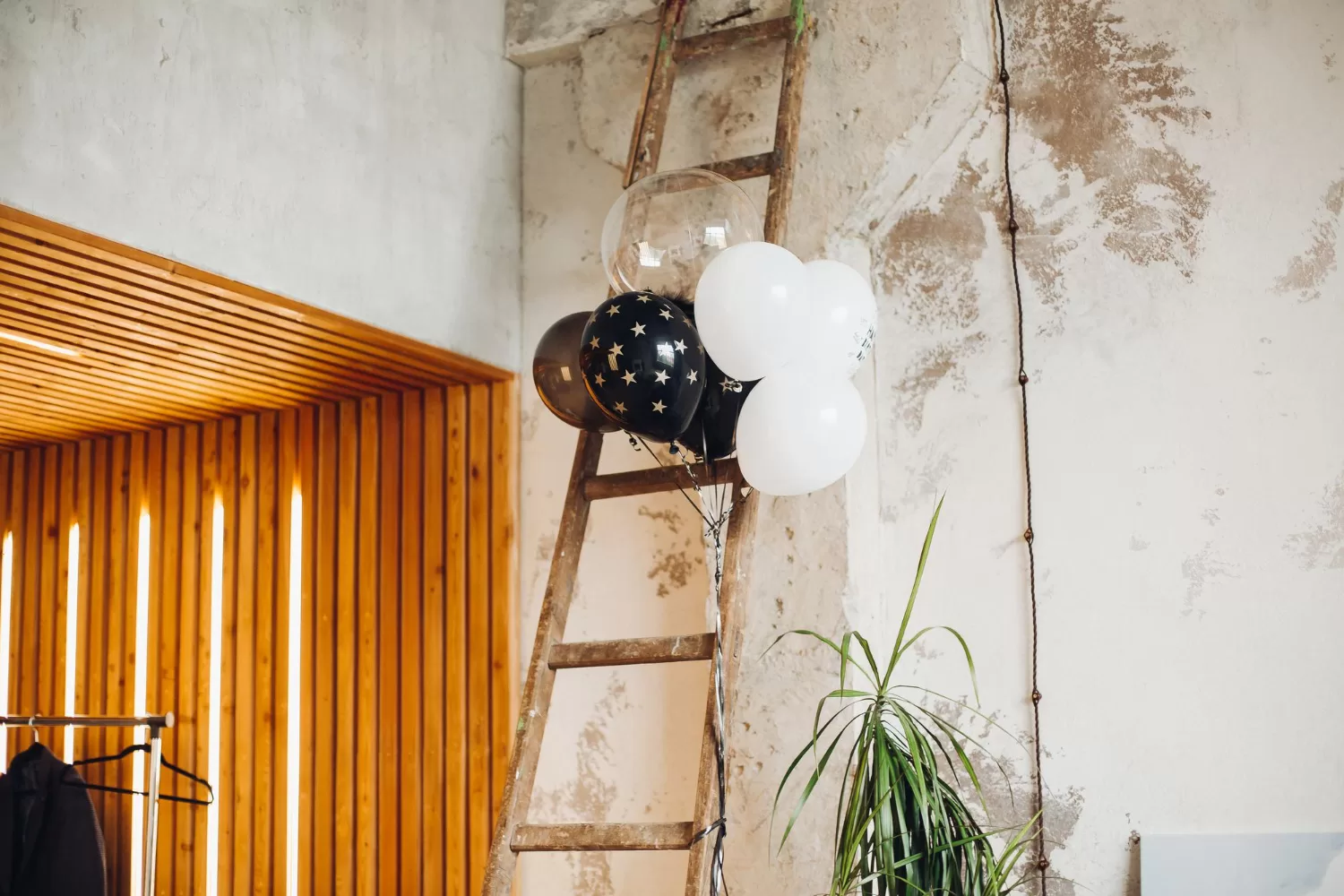Often, when we discuss damp issues, we’re referring to damp on exterior and interior walls of a building. However, these are not the only places in your home that can experience damp damage. Damp concrete floors are a serious issue, with similarly problematic consequences if left untreated. Previously, treating a damp patch on concrete floors required excavating and replacing the entire floor. Fortunately, we live in a time with easier and cheaper solutions.
In this post, we’ll look at the signs of damp on concrete floors as well as how to seal a damp concrete floor.
Despite the construction innovations it has made possible, concrete is not a perfect material. In fact, one of its flaws is that it’s porous. When used in building, it allows water to enter through small holes and travel in a capillary system, much like how rising damp affects walls.
Damp in concrete floors may occur where the current damp proof course of the building has been damaged. In older buildings, there may not be a damp proof course installed, as they were not mandatory before 1875. Therefore, your property may be susceptible to developing a damp concrete floor without you realising.
What Causes Damp on Concrete Floors?
The porosity of concrete allows the material to absorb water and enter a building. This is known as water ingress. Before looking into how to damp proof a concrete floor, it’s worth exploring where damp in concrete floors stems from. In this way, you’re able to tackle the underlying problem and prevent further damage.
Damp concrete floors are a result of excess water being absorbed by the concrete. Therefore look for areas giving off excess moisture, such as faulty plumbing in the form of leaking pipes or clogged gutters. Rising damp and damp on concrete floors are similar in that both are able to absorb and store groundwater. The difference is that rising damp sees groundwater being absorbed and travelling through walls, as opposed to floors. The weather can also contribute to excess moisture, in the form of rainfall or melted snow.
There are also less apparent factors that can contribute to excess moisture being present and resulting in a damp patch on concrete floors. Landscaping on your property involving the removal of plants and trees that absorb water from the soil will leave more groundwater to be absorbed by your floors. Likewise, construction on a building can damage the damp proof course in place, making it less effective at preventing damp.
Signs of Damp on Concrete Floors
If you suspect your property may be experiencing damp concrete floors, you need to know which signs to look for. The most evident sign of a damp concrete floor will be just that: a damp patch on a concrete floor that’s moist to the touch. Aside from damp patches, look for stains that may also leave a residue or growing mould. Damp will also cause damage to floor coverings, resulting in discoloured carpeting or warped wooden floor panels.
Damp on concrete floors exhibits many of the same signs as damp affecting walls, such as rising damp or penetrating damp. Signs such as a musty odour, rotting skirting boards or bubbling or peeling wall coverings near the ground are indicators of rising damp, damp concrete floors or a combination of both. This is all the more reason to employ a professional to diagnose the problem. Just like rising damp, damp in concrete floors can cause serious issues such as structural damage or respiratory issues due to mould. Once you detect signs of a damp patch on concrete floors, act fast to prevent it from spreading and getting worse.
How to Treat Damp on Concrete Floors
Once you’ve found the source of your damp problem, the first step is repairing the root cause. In the early stages of damp on concrete floors, this can be very effective in alleviating the issue altogether.
However, your property may be at a stage where professional help and treatment is unavoidable. Thankfully, we live in a time where the answer to how to seal a damp concrete floor is no longer replacing the entire floor. A professional may suggest one of two remedies, each with advantages and disadvantages.
1. Damp-Proof Coating
A damp-proof coating is a liquid floor coating applied directly to the concrete floor to seal it and prevent water from seeping in. It’s usually an epoxy resin coating, as this is more durable, but where there is going to be a floor covering on top of the concrete then a latex-based coating can be used. Prior to application, the damp concrete floor must be cleaned and dried. Failure to do so will affect the application and finish of the product. Using a brush or roller, the coating is applied in a two-step process.
It cannot be overstated how simple this solution is when compared to previous damp proofing methods. However, ease is not it’s sole advantage. Using a damp-proof coating has the added benefit of being nearly odourless and free of solvents. It’s the preferred choice for industrial use due to its smooth finish but can also serve domestic purposes. Not only will it keep water out, but it also looks good.
However, damp-proof coatings are not suitable for every situation. They’re best used to salvage damp concrete floors that have been exposed to minimal moisture. Therefore, if your concrete floors have been severely damaged or are exposed to plenty of moisture, a coating will not be the best option. Moreover, a coating is primarily used where the concrete is the surface layer and won’t be covered by another material. Therefore, if you intend to apply wood, carpeting or tiles on top of the concrete or the concrete floors have already been covered, damp-proof coatings are not the answer to damp on concrete floors.
2. Damp-Proof Membrane
Damp proofing concrete floors doesn’t have to mean sacrificing the flooring of your dreams. If your ultimate goal is to apply wood, tiles or carpet to complete your home’s interior, the preferable option is to install a damp proof membrane on concrete floor. A damp-proof membrane is a sheet of plastic composites such as high-density polyethylene (HDPE) or polyethene. It’s waterproof, non-porous and produced at a regulated thickness so as to effectively prevent water from travelling through it.
Although it doesn’t involve completely uprooting your property’s flooring, installing a damp-proof membrane will require the removal of floor coverings to expose the concrete underneath. Once the membrane is applied, the floor coverings can be refitted to cover it.
Clearly, this method of damp proofing concrete floors is more labour-intensive than damp-proof coating. However, it offers the benefit of protecting your overlay floor coverings from future damage due to damp in your concrete floor. Especially where there is a risk of excessive moisture. Ideally, if your floor is exposed concrete and you’re interested in adding a layer of tile or wood, installing the membrane first is the best solution given that any covering can be applied over it.
If your home was built without a damp proof course or the installed damp proof course is damaged, installing a damp-proof membrane to concrete floors can prevent damp from arising in other areas of your home, such as the walls. Damp-proof membranes are suitable for both walls and floors, therefore you can apply them in both places for more protection.
Finding the best treatment for damp on concrete floors will not only depend on whether the concrete is exposed on your property. Factors such as where the damage is – above, below or at ground level – the primary cause and how far it has spread are also contributing factors to consider. Plenty of damage can be avoided by fixing a leaking pipe or unblocking a gutter. However, the best way to determine and execute a treatment plan is to employ an expert.
A specialist damp-proofing and timber preservation company such as CS Damp Proofing can provide an assessment and advise you on treatment options on how to damp proof a concrete floor specific to your property’s issues. On top of highlighting potential risks for future damage and the source of current damage, we can execute the treatment in a cost-effective and timely manner. As with most property problems, the earlier they are detected and treated, the cheaper the procedure with fewer complications to treat. Delaying assessment can spell more damage and more money and time spent on repairs.
Contact CS Damp Proofing
Damp on concrete floors can cause as much damage to a building as damp on walls if detected too late. It’s imperative to find and treat the problem as soon as possible to save time, energy and money later on. Contact CS Damp Proofing on 01765 452510 or fill in our contact form if you’ve found signs of damp concrete floors or believe your property is at risk. Our team of professionals are ready to guide you through the process of fixing your concrete floors.

